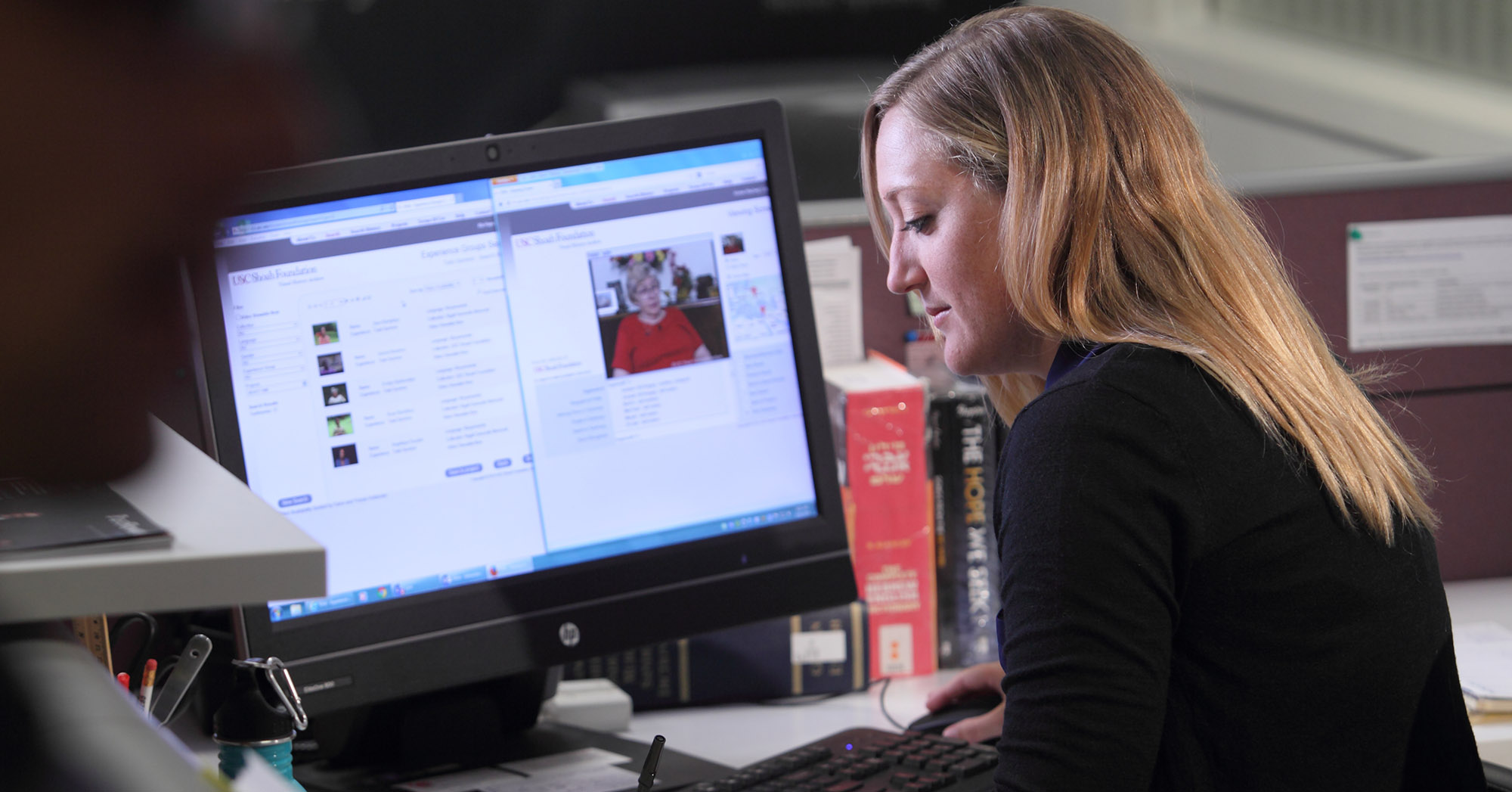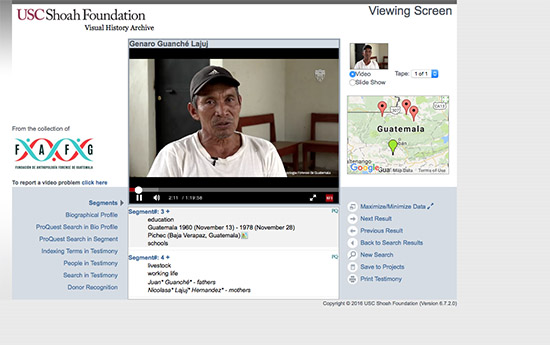Visual History Archive Updated with Guatemalan Genocide Collection, Canadian Collections and Interface Enhancements


New Guatemalan testimony as it appears in the Visual History Archive
The Visual History Archive added 1,302 new testimonies, 1,361 new interviewees, six new experience groups, one new historic event and 10 new collections in a single update over the weekend.
The update includes the first 10 Guatemalan Genocide testimonies, 1,179 Holocaust testimonies from the new Canadian Collections, the final 87 Armenian Genocide testimonies and 21 testimonies for the 1994 Genocide Against the Tutsis in Rwanda Collection. The Visual History Archive now has 53,973 testimonies.
In addition, updates to the VHA’s indexing software have enabled the addition of 41 “group interviews,” featuring more than one interviewee within a single testimony, which have never been indexed as such in the archive before.
The Rwandan testimonies include the first testimonies by Elders, a Hutu Power Opponent and a Victim’s Spouse. The other new experience groups are Armenian Genocide Scholars and Yezidi Survivors, and Guatemalan Genocide Survivors.
The Guatemalan testimonies were collected by Fundación de Antropologia Forense de Guatemala (FAFG), the Institute’s partner in Guatemala. All the testimonies are conducted in Spanish.
The Canadian Collections are part of the Institute’s Preserving the Legacy initiative, in which Holocaust testimony collections from around the world are preserved in the Visual History Archive. The collections come from Holocaust institutions across Canada, including the Montreal Holocaust Centre, Neuberger Holocaust Education Centre, Alex Dworkin Canadian Jewish Archives, and six others. The testimonies are in English, French, Hebrew, Hungarian, Russian, Romanian and Yiddish.
With the addition of 87 Armenian Genocide testimonies, the collection is fully integrated in the Visual History Archive. The final testimonies include more scholars, a testimony that includes the interviewee’s funeral at the end, and the collection’s Greek, Spanish, Arabic, French and Kurdish-language testimonies.
Users may also notice some enhancements to the archive’s interface. Users can now save individual testimony segments in their project folders within the VHA. The layout of the “Biographical Profile” screen for each testimony has also been updated to accomodate multiple interviewees in the new group interviews.
The new testimonies brought with them over 800 new indexing terms, which cover hundreds of new terms for the Guatemalan collection, as well as new terms for existing collections.
The Visual History Archive Online also gained 128 testimonies, for a total of 1,803. Two hundred ninety-one testimonies were added to IWitness, for a total of 1,956.
Like this article? Get our e-newsletter.
Be the first to learn about new articles and personal stories like the one you've just read.